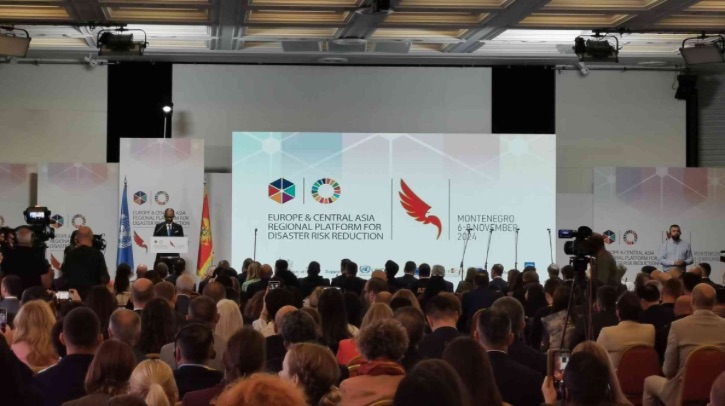The UN’s 2024 Europe and Central Asia Regional Platform for Disaster Risk Reduction welcomed over 700 participants from 55 UN member states to Budva, Montenegro, to tackle the urgent need for enhanced action on disaster risk reduction and climate resilience.
Addressing climate-related disasters
Taking place on November 6-8, 2024, the event saw member states endorse a political declaration that committed to strengthening disaster risk reduction (DRR) and address the growing impacts of climate change in the region ahead of COP29 in Baku, Azerbaijan, (Nov 11-22), as the region grapples with increasing climate-related disasters, including floods, wildfires, extreme heat, as well as earthquakes and other risks.
Under the theme ‘Empowering Communities, Building Resilience’, the platform aimed to drive collective actions that protect and involve communities who are most at risk, strengthen governance, and integrate DRR and resilience-building measures across all sectors and levels of government.
At the event, the member states acknowledged the escalating risks across the region, exacerbated by climate change, economic vulnerabilities and geopolitical tensions, and committed to four targeted actions in line with the Sendai Framework for Disaster Risk Reduction and the regional DRR Roadmap 2021-2030.
The first is integrated action on DRR and climate resilience, with member states committing to scaling up integrated actions on disaster risk reduction and climate change. This includes setting more ambitious Nationally Determined Contributions (NDCs) that not only meet climate targets but also prepare communities for future disasters.
Secondly, the event highlighted the importance of inclusive risk governance. Member states committed to meaningfully engaging all sectors of government and society, with a focus on marginalized groups, to ensure disaster risk reduction and climate change adaptation policies are inclusive and effective for all communities.
The third action is increased financing for resilience, with member states committing to enhancing disaster and climate risk financing. This involves prioritizing investments in resilient and green infrastructure capable of withstanding climate impacts and natural hazards, with a focus on nature-based solutions and sustainable technologies.
Member states also committed to improving multi-hazard early warning systems (EWS) to ensure timely and accurate and accessible alerts for all hazards. The goal is to expand EWS coverage to protect every person globally by 2027, in line with UN targets.
At the opening ceremony, the Prime Minister of Montenegro, Milojko Spajić, stated, “As we face the increasing frequency and severity of climate-induced disasters, it is imperative that we work together to strengthen our resilience and preparedness.”
Earthquake preparedness
The Prime Minister also launched a Montenegro Call for Action on Earthquake Preparedness and Recovery at the platform, urging member states to take concerted actions to reduce the human and economic toll of seismic events.
Kamal Kishore, Special Representative of the UN Secretary-General for Disaster Risk Reduction, remarked, “The Europe and Central Asia Regional Platform is a chance for the region to come together and commit to a prevention-first agenda. This means a greater political and financial commitment to disaster risk reduction and to embedding resilience in all investments. This is how we can fully implement the Sendai Framework and stop risks from becoming disasters. The alternative is continued loss of life and unsustainable funding on disaster response and recovery.”
Inclusivity and resilience
The platform also emphasized inclusivity, featuring youth and disability-focused events and innovative approaches to risk communication aimed at combating misinformation and promoting inclusive risk management. A marketplace and an Ignite Stage engaged diverse stakeholders on initiatives for building resilience.
In related news, the National Technical Consultation Workshop on Disaster Tracking, Data Management, and Early Warning Systems for Somalia recently concluded in Nairobi, Kenya. Click here to read the full story.



